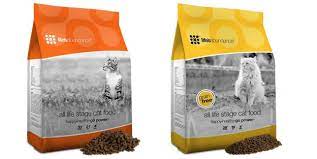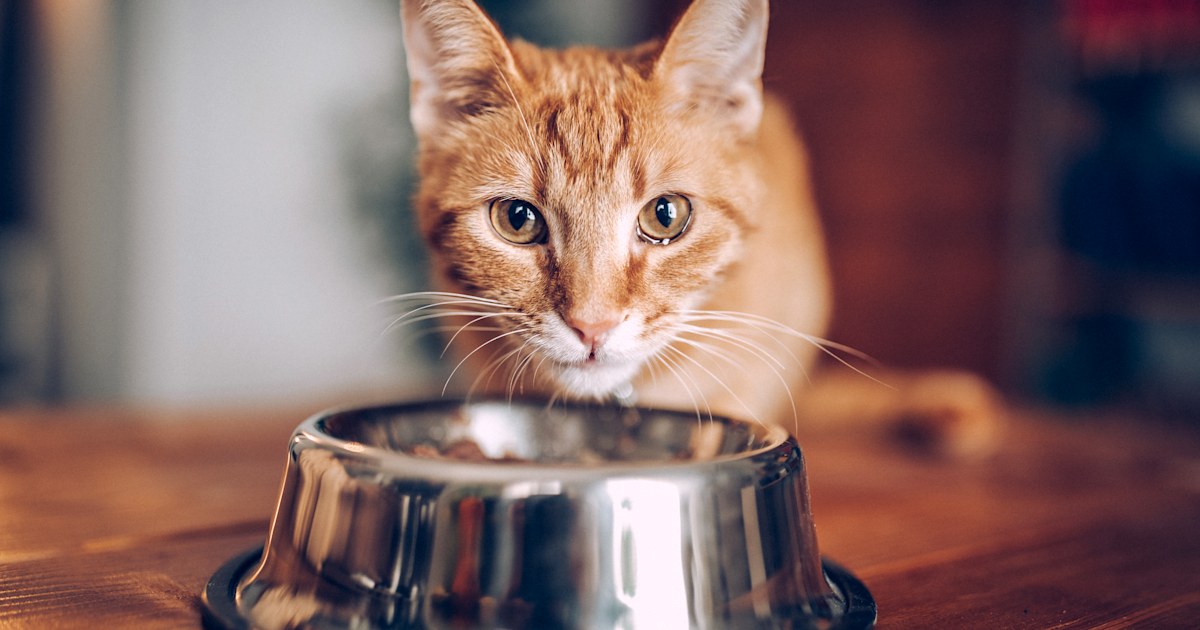Dry cat food, also known as kibble or dry food, refers to commercially manufactured cat food that comes in a dry, crunchy form. It is a popular and convenient option for cat owners as it has a long shelf life, is easy to store, and can be left out for free feeding without spoiling.
Dry cat food is typically made by combining various ingredients such as meat, poultry, fish, grains, vegetables, and added vitamins and minerals. The ingredients are mixed, cooked, and then extruded into small, dry kibble shapes. The extrusion process helps to preserve the nutrients and extend the shelf life of the food.

Dry cat food is available in different formulations at Healthy Food for Pets to meet the nutritional needs of cats at different life stages, such as kitten, adult, and senior formulas. Additionally, there are specialized dry cat foods designed for specific health conditions, such as weight management, urinary health, or sensitive digestion.
While dry cat food can provide a complete and balanced diet for cats, it’s important to choose high-quality cat food options that contain real animal proteins as the main ingredients.
When purchasing dry cat food, it’s important to pay attention to the ingredients listed on the packaging. Here are some ingredients that you may want to avoid when buying dry cat food:
- Meat By-Products: Lower-quality dry cat foods may contain meat by-products, which are less desirable parts of animals that are not typically consumed by humans. Look for products that specify high-quality animal protein sources like named meats (e.g., chicken, turkey, salmon) instead.
- Fillers and Grains: Some dry cat foods include fillers like corn, wheat, soy, or other grains as primary ingredients. These ingredients have limited nutritional value for cats and can be challenging for them to digest. Opt for dry cat foods that prioritize high-quality animal proteins and nutrient-rich carbohydrates like sweet potatoes or peas.
- Artificial Preservatives: Chemical preservatives like BHA (butylated hydroxyanisole), BHT (butylated hydroxytoluene), and ethoxyquin are sometimes used in dry cat foods but may have potential health risks. Look for dry cat foods that use natural preservatives like mixed tocopherols (vitamin E) instead.
- Artificial Colors and Flavors: Artificial colors and flavors provide no nutritional value and can potentially cause allergies or sensitivities in cats. Choose dry cat foods that use natural ingredients for color and flavor enhancement.
- Artificial Sweeteners: Artificial sweeteners like xylitol are toxic to cats and should be avoided. Ensure that the dry cat food you choose does not contain any artificial sweeteners or sugar substitutes.
- Excessive Salt and Sugar: Dry cat foods with high levels of salt and sugar can have negative health effects on cats. Diets high in sodium can lead to dehydration and kidney issues, while excessive sugar consumption can contribute to obesity and dental problems. Opt for dry cat foods with balanced levels of these ingredients.
- Rendered Fats and Oils: Pay attention to the source of fats and oils in dry cat foods. Ingredients like “animal fat” or “unidentified fat sources” may be of lower quality and could contain unhealthy additives. Look for dry cat foods that specify the source of fats and oils, such as chicken fat or fish oil, which provide beneficial nutrients.
Reading the ingredient list and selecting a dry cat food from Healthy Food for Pets that meet the specific nutritional needs of your cat is essential for their overall health and well-being.
End Note: It’s important to note that individual cats may have specific dietary needs or sensitivities, so it’s a good idea to consult with your veterinarian for personalized recommendations based on your cat’s health and specific requirements.


